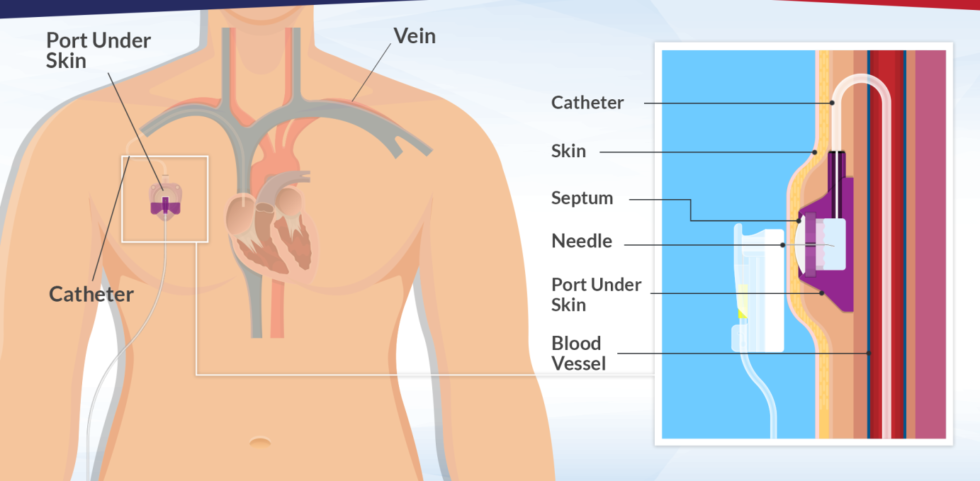What is a Port-a-Cath?
Lorem ipsum dolor sit amet, consectetur adipiscing elit. Ut elit tellus, luctus nec ullamcorper mattis, pulvinar dapibus leo.

What are the benefits of having a Port-a-Cath?
It is recommended for long-term treatments that require:
- Frequent administration of intravenous (IV) therapies such as chemotherapy.
- Frequent taking of blood samples.
- Direct administration of medicines into the central vein.
The benefits of having a Port-a-Cath in place include:
- Reducing the discomfort, pain and damage to the veins caused by these long-term treatments.
- You will not need to be injected by needles every time you have treatment or when blood samples are required.
What are the risks and complications of having a Port-a-Cath?
While a Port-a-Cath is generally very safe, there are still potential risks and complications.
Risks during insertion:
- Discomfort or pain caused by the local anaesthetic.
- Blood infection.
- Bleeding due to accidental puncturing of an artery.
- Pain caused by accidental touching of a nerve by the needle.
- Very rarely, the lung may be punctured during the procedure.
Complications after insertion:
- Scaring: Scars will form at the insertion point due to the incisions needed for the insertions.
- Infection:Some patients may develop an infection which can be treated with antibiotics. In severe cases, the Port-a-Cath will have to be removed.
- Blood clot (thrombosis):In rare cases, a patient can develop thrombosis. This can be prevented with a blood-thinning solution locked inside the port when it is not in use.
Blockage (occlusion): This is usually caused by blood in the tube when the tube is not adequately flushed through after use.
How is a Port-a-Cath inserted?
You will be asked to lie down on your back and the intended site of insertion will be cleaned thoroughly with antiseptic fluid to sterilise the area.
Following that, a local anaesthetic is injected into the skin of the chest and neck to numb the area. After that, you should only feel slight pressure not pain during the procedure. Once the local anaesthetic has taken effect, two incisions will be made on the skin at your collarbone area and chest area. The catheter will be tunnelled from the chest incision towards the collarbone incision and then threaded along a large vein to a place near your heart. This will be guided by ultrasound.
The port will then be connected with the catheter and placed under the skin via the chest incision. After both incisions are stitched up, the procedure is completed. A chest X-ray is used to check the position of the Port-a-Cath.
How do I care for my Port-a-Cath?
For the first two weeks after the procedure, the insertion wounds will be dressed to help with the recovery. Extra care should be taken to keep the dressing dry and clean during this period.
At the end of the two weeks, if the stitches have not dissolved yet, they will be removed.
Our dedicated nurses will provide you with any assistance to help you care for your PICC.
After your skin is healed, the Port-a-Cath should feel like a little bump under your skin. While the port requires little maintenance, it will need to be:
- Flushed regularly. The Port-a-Cath should be flushed once every four weeks when not in use.
- The skin over the Port-a-Cath should be thoroughly cleaned before use to prevent infections
Our dedicated team of doctors and nurses will give you detailed instructions and provide you with any assistance to help you care for your Port-a-Cath.
How is the Port-a-Cath removed?
Once you have completed your treatment and no longer need the port, it is removed under local anaesthetic. A small cut will need to be made to remove it and the wound is stitched and dressed.
